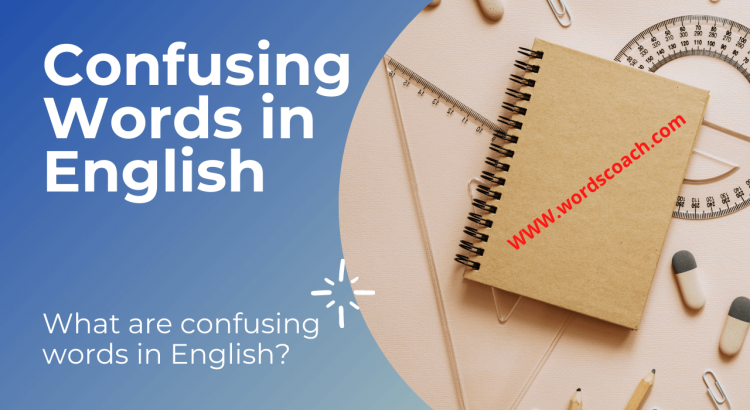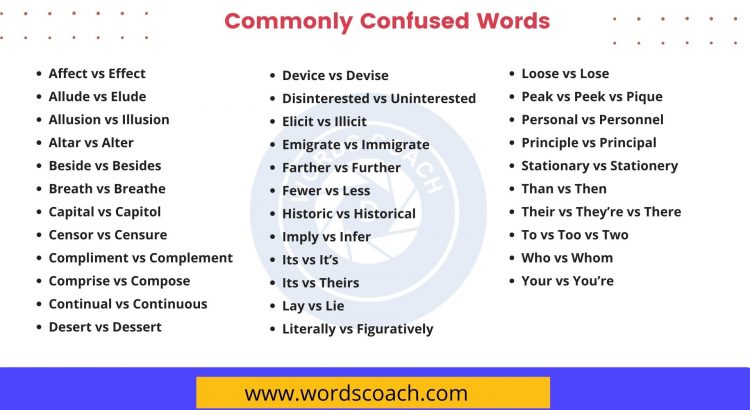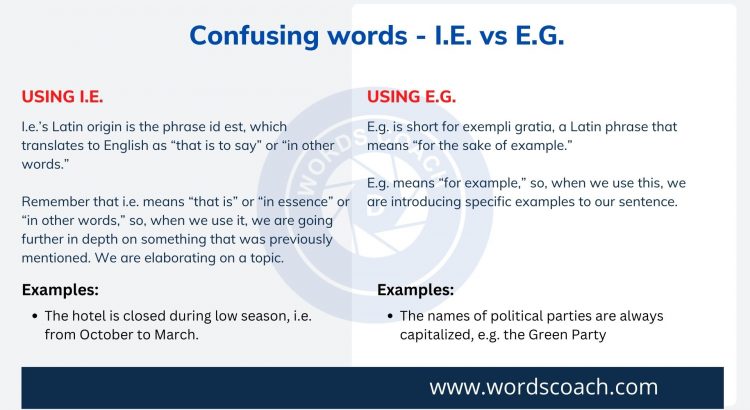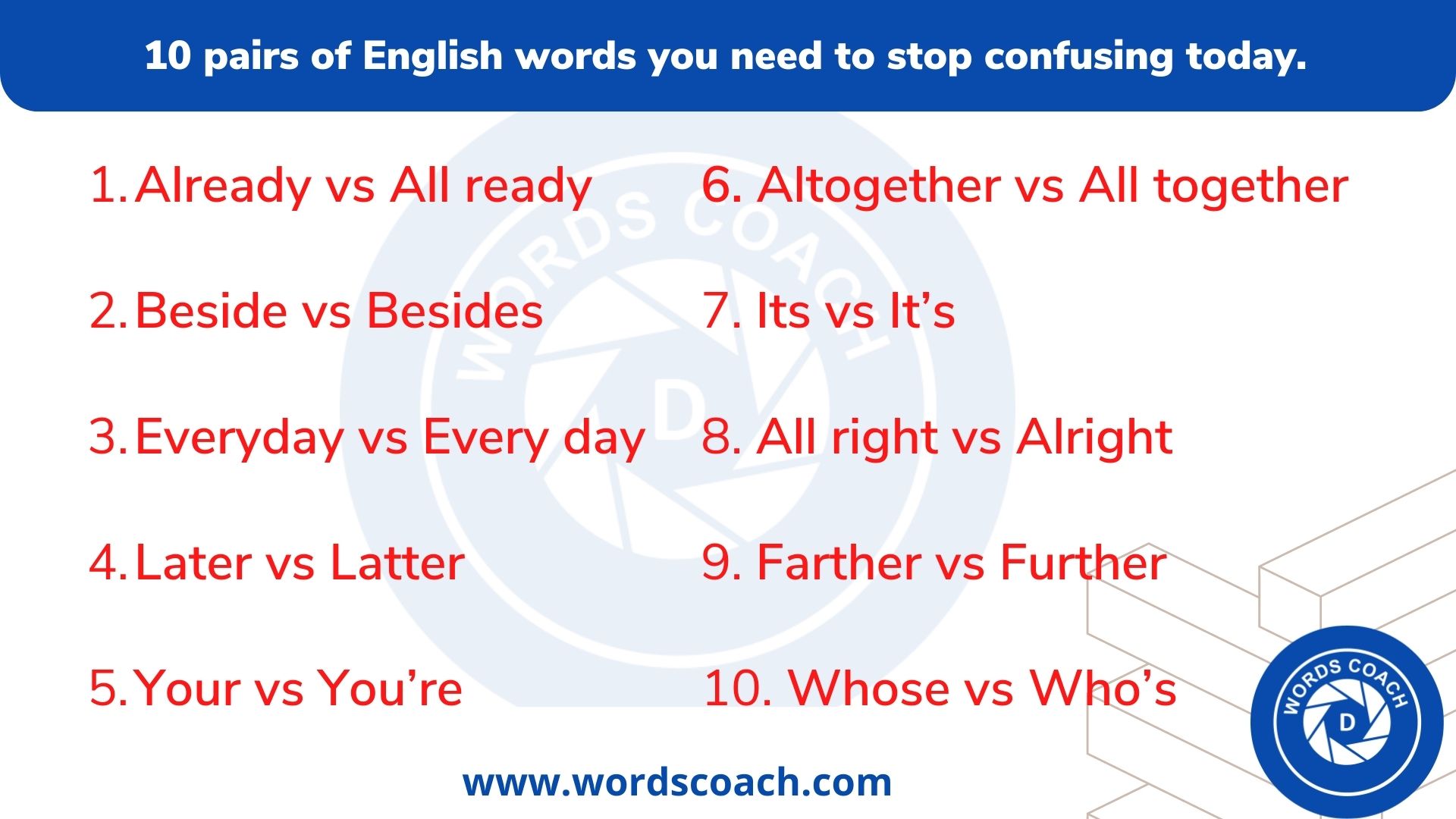Confused between look at, watch, and see? Learn the key differences with clear explanations, examples, tips, and a quiz to master their usage in English.
Category: Confusing words

200+ Great Examples of Homonyms in English
Discover over 200 examples of homonyms in English with detailed explanations. Learn about homophones and homographs, and understand how context shapes meaning. Perfect for language enthusiasts and students.

Use of Let & Let’s in English
Learn the proper use of “let” and “let’s” in English with our detailed guide. Understand the differences, usage rules, and see examples to improve your grammar and communication skills.

Difference Between Even so or Even though
Learn the difference between “even so” and “even though” with clear explanations and examples. Master these commonly confused phrases to enhance your English writing and speaking skills.

Difference Between Hear and Listen
Difference Between Hear and Listen. Understand the key differences between “hear” and “listen” with detailed explanations and examples. Learn how to use these terms correctly in various contexts to improve your English language skills.

Difference Between Was and Had
Understanding the difference between was and had in English grammar. Learn their uses, rules, and examples to improve your language skills.

Difference Between Noun and Pronoun
Difference Between Noun and Pronoun. Explore the key differences between nouns and pronouns, their functions in sentences, and how they contribute to the structure of language. Understand with examples the unique roles these parts of speech play in grammar.

Difference Between Some Time or Sometime
Ever wondered when to use “some time” versus “sometime”? This blog post clarifies the difference! Learn how to distinguish between indefinite periods and specific points in time, mastering the nuances of these two common phrases and becoming a confident English communicator.

Difference between Emigrate and Immigrate
Difference between Emigrate and Immigrate. To distinguish between emigrate and immigrate and use them correctly in context.

Difference between Either or and Neither nor
Difference between Either or and Neither nor. To understand the difference between “either/or” and “neither/nor” and use them correctly to show positive or negative choices.
Difference Between Very, Too and Enough
Difference Between Very, Too and Enough. To distinguish between very, too, and enough and use them correctly in sentences.
Difference Between No and Not
Difference Between No and Not. To understand the difference between “no” and “not” in negating sentences in English.

Difference between Advice and Advise | Advice vs Advise
Difference between Advice and Advise | Advice vs Advise. Learn the key differences between these often confused words and become a confident communicator.

Their Vs. There Vs. They’re – What’s the Difference?
Don’t be confused by these three tricky words! Learn the difference between their, there, and they’re with this quick and easy guide.

Your Vs. You’re – What’s the Difference?
Learn the difference between your and you’re to avoid embarrassing grammar mistakes.

Its Vs. It’s – What’s the Difference?
Learn the difference between its and it’s to improve your writing and grammar skills.

To Vs. Too Vs. Two – What’s the Difference?
To, too, and two are homophones, but they have different meanings and uses. Learn how to use these words correctly to avoid embarrassing grammar mistakes.

Then Vs. Than – What’s the Difference?
Then vs. Than: Never confuse these two commonly confused words again!

Who Vs. Whom – What’s the Difference?
Who vs. Whom: Learn the difference between these two commonly confused pronouns to avoid embarrassing grammar mistakes.

Accept Vs. Except – What’s the Difference?
Accept vs. Except: Learn the difference between these two commonly confused words to avoid embarrassing grammar mistakes.

Lose Vs. Loose – What’s the Difference?
Lose vs. Loose: What’s the Difference? Never confuse these two commonly confused words again!

Further Vs. Farther – What’s the Difference?
Further Vs. Farther: Learn the difference between further and farther with this simple guide.

50 Commonly Confused Words (and How to Conquer Them)
Avoid embarrassing language mistakes by learning the difference between commonly confused words in English. Get a better understanding of homophones, homographs, and other word pairs that are often misused in written and spoken communication. Improve your language skills and communicate more effectively with this comprehensive guide to commonly confused words.

Confusing words – I.E. vs E.G.
What’s the Difference between E.G. vs I.E.?
E.g. is used to give one or more possible examples. It’s a signal that you’re seeing one or a few of multiple possibilities.
I.e., on the other hand, clarifies; you are providing more precise information.

10 pairs of English words you need to stop confusing today.
There are many word pairs in English that sound the same but mean something totally different. Here are 10 such confusing word pairs of English along with their usage.

